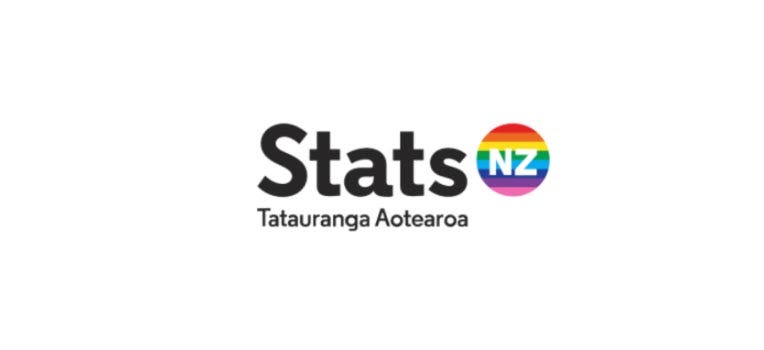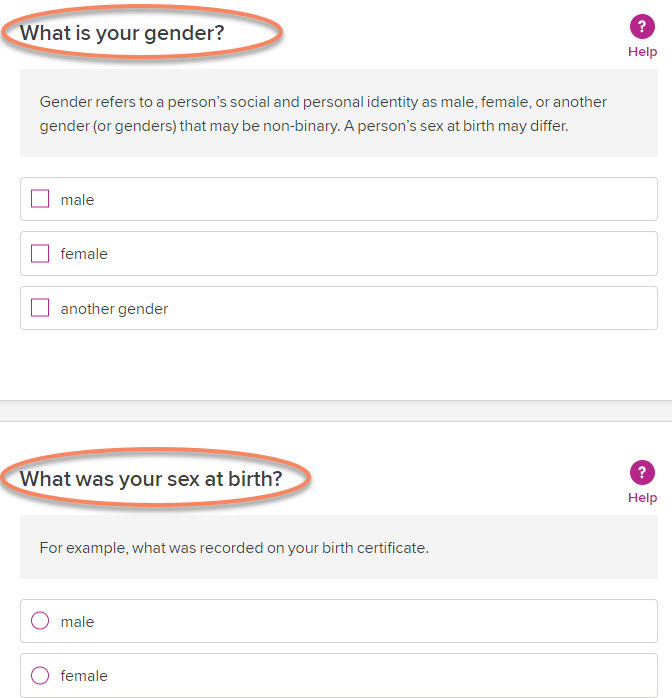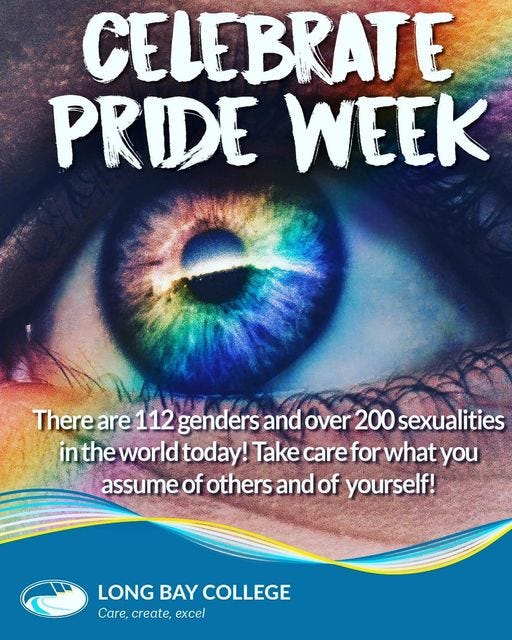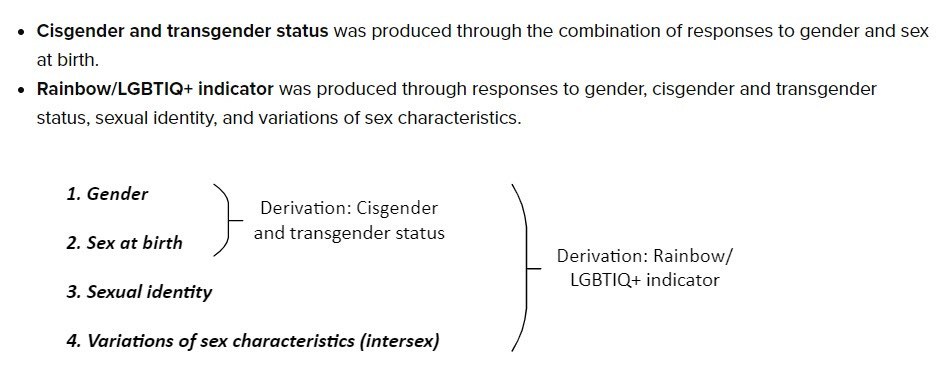Stats NZ's LGBT data disaster
There was a ‘dump’ of 2023 census data by Stats NZ. It should be based on biological reality & observable data - but Stats NZ is more keen to push gender & sexuality ideology & fabricated data
Stats NZ were shouting from the rooftops yesterday
2023 Census shows 1 in 20 adults belong to Aotearoa New Zealand’s LGBTIQ+ population
Data from the 2023 Census found that 172,383 people (4.9 percent of adults) belonged to the LGBTIQ+ (or Rainbow) population, according to data released by Stats NZ today. LGBTIQ+ includes people who are lesbian, gay, bisexual, transgender, non-binary, intersex, or have other minority genders or sexual identities.
The 2023 Census was the first census to collect data from New Zealanders about their gender, sexual identity, and whether they have a variation of sex characteristics.
And the media were excited.
Stats NZ have been on a mission for a while.
Stats NZ said in a recent statement that “When Rainbow communities are visible, they can represent themselves. That is why InsideOUT and Zeal Wellington use data to connect Rainbow youth with their communities.”
It’s not about data collection. It’s about pushing an agenda.
Now you may be asking – how did Stats NZ get their results.
Well, remember - The Census! You know – when we realised that Stats NZ is now treating our biological sex and our gender as two separate things in order to ram down non-biological gender ideology in the name of diversity equity and inclusion – and wokeness.
Let me take you down memory lane.
As soon as you start filling in the Census, the ideology immediately kicks in. Here’s your opening questions
Q1 Confirm it’s you
Q2 confirm where you were born
Q3 … question 3! What’s your gender identity.
Gender refers to a person’s social and personal identity as male, female, or another gender (or genders) that may be non-binary. A person’s sex at birth may differ.
The answer options are “Male, Female, Another gender”
And then q4 - What was your sex at birth?
And unbelievably, there’s only 2 options! “Male Female”. How binary.
There’s then more questions – and we get to
Which of the following best describes how you think of yourself? Heterosexual / straight, gay or lesbian, bisexual, another identity, (shouldn’t that say “another sexuality”) and prefer not to say
but why don’t they list them all? I mean, why don’t we list the 112 genders and over 200 sexualities?
By the way, the gender question doesn’t have to be answered.
Now from that information, they determined whether you were a member of the “rainbow” community. Stats NZ is very very clever.
They can’t figure out that if you’re born a female, you are a female – BUT they can definitely figure out if you qualify for the special victimhood status of LGBTQWERTY+++
And they have this diagram to explain it all.
Cisgender and transgender status was produced through the combination of responses to gender and sex at birth.
So if your answer to “Gender” and “Sex at birth” were the same, no – that doesn’t mean you believe in biological truth. Stats NZ says it means you are “cisgender”.
And if the answers are different, you must be “transgender”. They also had a category “Cisgender and transgender status unidentifiable”.
Maybe that’s all the Family First supporters who drew XX and XY drawings through all their answers!
Now I know so many people that refused to answer those two questions and just did one or the other. Because in the real world, they’re the same thing!
But don’t tell the good people at Stats NZ that eh. It will blow their minds.
And then it said
Rainbow/LGBTIQ+ indicator was produced through responses to gender, cisgender and transgender status, sexual identity, and variations of sex characteristics.
What was the sexual identity question?
Which of the following best describes how you think of yourself? Heterosexual / straight, gay or lesbian, bisexual, another identity, (shouldn’t that say “another sexuality”) and prefer not to say.
So Stats NZ coded our answers as
1 Heterosexual
2 Homosexual
3 Bisexual
5 Sexual identity not elsewhere classified
6 Prefer not to say
9 Not elsewhere included.
And based on our answers to sex and gender, they coded us as:
Cisgender male
Cisgender femaleTransgender male
Transgender female
Transgender person of another genderCisgender and transgender status unidentifiable.
And then…. they started handing out the rainbow ticks.
The Rainbow/LGBTIQ+ indicator is derived based on responses to gender, sexual identity, and variations of sex characteristics, as well as cisgender and transgender status.
The LGBTIQ+ category is derived where one or more of the following responses have been received:
· another gender
· transgender (derived)
· a response that is coded to be homosexual, bisexual, or sexual identity not elsewhere classified
· persons who know they were born with a variation of sex characteristics.
Rainbow/LGBTIQ+ indicator has three output categories at level 1 of the classification:
1 LGBTIQ+ (you are)
2 Not LGBTIQ+ (you’re not)
3 LGBTIQ+ status unidentifiable. (heck – even we don’t know)At level 2 of the classification, the LGBTIQ+ category is broken down to distinguish between:
11 Another gender
12 Transgender
13 Homosexual, bisexual, or sexual identity not elsewhere classified
14 Persons who know they were born with a variation of sex characteristics.
Here’s the classic bit.
Individuals can belong to more than one of the level 2 categories.
Does that mean you can be heterosexual during the week, but bisexual when you go to the music festival maybe? Or identify as transgender but just when you dress up in drag to go read LGBT books at the library to preschoolers and get paid megabucks by the ratepayers to do so?
But remember this statement that you can belong to more than one group when we get to the statistics. There could be a whole lot of double ups.
Now they actually admit that the whole classification system is troublesome – for two reasons!
Gender and sex at birth received quality ratings of high and very high respectively… Sexual identity, variations of sex characteristics, cisgender and transgender status, and the Rainbow/LGBTIQ+ indicator all have the quality rating of poor.
Self identity is never a reliable source. That’s why physical and mental health issues are based on a robust examination and diagnosis. Gender identity and sexual identity are not objectively measured.
In fact, of that list, only “sex at birth” has any credibility to it. The rest are all made-up concepts, including “cisgender”. Cisgender is a made-up word for normal biology.
But here’s the 2nd problem.
Because we can’t define what is a woman, (based on biological sex), how do we do comparisons with earlier data collection. How do we compare data affecting women, when men can now be women, and vice versa.
Be cautious with time series comparisons between gender and historic sex data because of the conceptual differences between the two variables.
Just above this, they say
Use of [sex at birth] is recommended where there is a specific need to disaggregate males and females at birth, such as for fertility and population projections which rely on this specific concept.
So, anyway, based on their botched and ridiculous and confusing definitions, what was the outcome?
The LGBTIQ+ indicator includes individuals over 15 years of age who report a sexual identity other than heterosexual (gay or lesbian, bisexual, or another sexual identity), whose gender is different from the sex recorded at their birth (transgender, or another gender/non-binary), or who are intersex. People may belong to one or more of these groups.
In the 2023 Census, 144,960 people (4.1 percent of the census usually resident population aged 15 years and over) reported a sexual identity other than heterosexual. This included:
· homosexual (gay or lesbian) – 47,631
· bisexual – 78,300
· sexual identity not elsewhere classified – 19,026.
Just 4.1%. 1 in 25 people.
Based on media coverage, you’d think it was only 1 in 25 people are heterosexual!
In 2023, 26,097 people (0.7 percent of the census usually resident population aged 15 years and over) were transgender. This included:
· transgender male – 5,013
· transgender female – 5,736
· transgender person of another gender – 15,348.
Transgender person of another gender. How does that work?
Intersex – 0.4%. 26,000.
But if you listened to Stuff, they recently said it was 2.3%. 117,000. That’s 5 times more than it is. The University of Waikato said it could be up to 4%.
However, remember that Intersex is a verifiable diagnosis and should not be part of the LGBT umbrella anyway.
Now here’s something you probably didn’t know.
Wellington has the highest proportion of LGBTIQ+ people. The gayest village in the city.
By far!
OK – we all knew that. Apologies to our Wellington friends. But it is where the Ministry of Education is based pushing the RSE curriculum. And the Ministry of Health sorting policies on puberty blockers.
The result also showed that young adults (15-24) make up the largest proportion of people with another gender – which is probably not surprising given the indoctrination that has been going on. But it’s still around 1% -1.25%. That’s it.
So 4.1% of the population have a sexual identity such as gay, lesbian or bisexual. And 0.7% of the population are transgender or non-binary or something else.
That’s how they got to 4.9%.
But they’ve already admitted “Individuals can belong to more than one of the level 2 categories.”
And how many of the transgenders are likely to be the boring old heterosexual.
So 4.9 is actually really really generous – and misleading by Stats NZ.
But here’s the other really really interesting bit.
Stats NZ also published the LGBT+ population data in 2021 and its based on the Household Economic Survey for the year ended June 2021 – a survey of about 16,000 responding households (including more than 32,000 people aged 18 and over). So it’s a big survey outside of the Census.
Here’s what it said
54,700 people who were exclusively gay or lesbian (people sexually attracted to their own gender)
54,700 exclusively gay or lesbian.
What’s the figure in this census just released? 47,631.
It’s dropped 13% in two years!!! Despite all the marketing, media and indoctrination.
OK – let’s just forget we saw that. Moving on…..
The concerning aspect in all of this is that Statistics NZ has been captured by gender identity politics – but they’re going to realise just how difficult and confusing and subjective the issue is. Statistics should deal as much as possible in actual measurable definable realities – not subjective standards with no measurement.
And remember, this Census I could be male. Next census I could be female. The following year I might be both. Or neither. The following Census I’m unsure. (not surprisingly!)
And my sexuality is all over the place.
Ok I’m just kidding here.
Stats NZ actually admit that might be the case in their guidelines, saying “People may identify with more than one gender identity.”
Statistics NZ will never make these groups happy. Even gender identity activists are complaining and saying it’s problematic.
Stats NZ need to stick to statistics and leave the social engineering and wokeness and cultural narratives to others.
Statistics should be independent, factual, non-bias and accurate because when they're not - when they're misrepresented - then it destroys your credibility.
When it's coming from government data, I think we should all be concerned.







What a total waste of Tax Payers Money NZ Stats has become.
WE ARE GOING TO REFUSE TO FILL THEM OUT IN FUTURE. We farmers enmass no longer fill out Agricultural census forms.
The further you stray from God
the more you loose sight of THE TRUTH.
LGBTIQ - 100